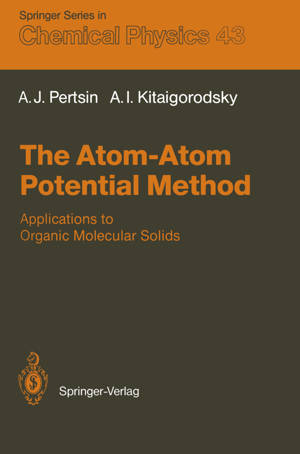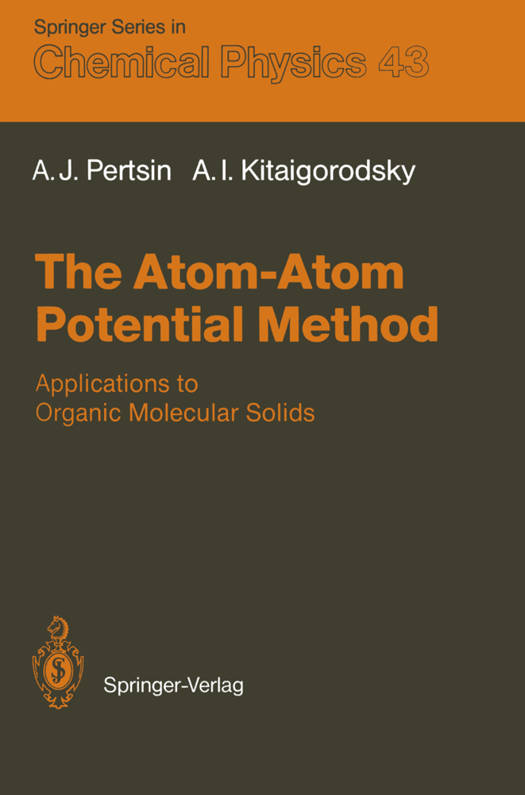
- Afhalen na 1 uur in een winkel met voorraad
- Gratis thuislevering in België vanaf € 30
- Ruim aanbod met 7 miljoen producten
- Afhalen na 1 uur in een winkel met voorraad
- Gratis thuislevering in België vanaf € 30
- Ruim aanbod met 7 miljoen producten
Zoeken
The Atom-Atom Potential Method
Applications to Organic Molecular Solids
Alexander J Pertsin, Alexander I Kitaigorodsky
€ 105,59
+ 211 punten
Omschrijving
The history of physics furnishes many examples of how a simple semiem- pirical method, essentially based on intuitive considerations, may prove to be much more successful than a rigorous theoretical approach. A pertinent example is the method of atom-atom potentials, which treats the intermolec- ular interactions between polyatomic molecules in terms of pairwise inter- actions between their constituent atoms. Despite a few conceptual short- comings, the method provides a fairly reliable practical means of handling, on a microscopic level, a wide range of problems that arise in the solid-state physics and chemistry of organic compounds. This monograph is an attempt to generalize the experience gained in the past twenty years in interpreting the static and dynamic properties of organic molecular solids in terms of atom-atom potentials. It embraces nearly all aspects of the application of the method, including an evaluation of cohesive energies, equilibrium crystal structures, phonon spectra, ther- modynamic functions, and crystal defects. Many related topics such as the effect of the crystal field on molecular conformation, the determination of crystal structures from raw diffraction data, and the problem of polymor- phic transitions are also discussed. We believe that this book will be of use to researchers in solid-state physics, chemistry, crystallography, physical chemistry, and polymer chem- istry. It also gives us an opportunity to acknowledge our indebtedness to those who sent us published as well as unpublished information and sugges- tions, including A.T. Amos, E.L. Bokhenkov, H. Bonadeo, R.K. Boyd, C.P.
Specificaties
Betrokkenen
- Auteur(s):
- Uitgeverij:
Inhoud
- Aantal bladzijden:
- 400
- Taal:
- Engels
- Reeks:
- Reeksnummer:
- nr. 43
Eigenschappen
- Productcode (EAN):
- 9783642827143
- Verschijningsdatum:
- 15/12/2011
- Uitvoering:
- Paperback
- Formaat:
- Trade paperback (VS)
- Afmetingen:
- 156 mm x 234 mm
- Gewicht:
- 576 g

Alleen bij Standaard Boekhandel
+ 211 punten op je klantenkaart van Standaard Boekhandel
Beoordelingen
We publiceren alleen reviews die voldoen aan de voorwaarden voor reviews. Bekijk onze voorwaarden voor reviews.








